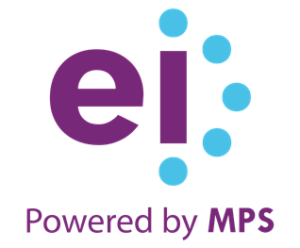Optimizing Employee Productivity And Performance With LIFOW
Learning in the flow of work (LIFOW) transforms learning by integrating it into daily workflows, enabling organizations to boost productivity and performance while achieving strategic goals more efficiently. Here’s how.
Seamless Integration
- Point-of-need accessibility: Learning resources are instantly available within the tools employees already use, enabling skill-based organizations to quickly adapt to changing demands.
- Natural learning: Learning becomes a natural part of work, particularly benefiting a multigenerational workforce that values contextual and relevant experiences, ensuring skills are built as tasks are completed.
Real-Time Problem Solving
- Immediate access to information: Employees can resolve work-related challenges on the spot, leading to a more agile, future-ready workforce capable of addressing issues as they arise.
Enhanced Engagement
- Continuous learning opportunities: Integrated learning fosters regular engagement, particularly appealing to younger generations seeking continuous growth, ultimately driving performance improvements across the board.
- Improved performance: Employees can immediately apply newly acquired skills, enhancing performance and ensuring real-time guidance that supports their development.
- Skill application: Employees can immediately apply newly acquired skills to their tasks, ensuring that learning translates directly into improved job performance and productivity.
- Performance support: Real-time assistance and guidance are provided within the workflow, empowering employees to overcome challenges swiftly and maintain high performance levels.
Enhanced Efficiency
- Streamlined processes: Learning becomes part of the workflow, reducing downtime and making skill acquisition more efficient, which is essential for organizations focusing on rapid upskilling.
- Reduced training costs: By embedding learning into daily tasks, organizations cut traditional training costs, making the L&D strategy more cost-effective and aligned with ROI goals.
Skill Building And Better ROI
- Continuous skill development: Employees continuously adapt to new technologies and processes. This is crucial for maintaining a competitive edge in a rapidly evolving market.
- Enhanced ROI: Organizations see higher performance, increased employee satisfaction, and reduced costs, leading to better overall outcomes and a more future-ready workforce.
Key Metrics For Assessing Impact
A 2023 Gartner report found that LIFOW strategies led to a 25% boost in employee productivity and a 20% increase in skill application rates, demonstrating a strong ROI impact. Here’s the triad of metrics to make a note of.
1. Productivity Metrics
- Purpose: Higher task completion rates, improved work quality, increased efficiency
- Impact: Directly proportional to ROI
2. Engagement Metrics
- Purpose: Boost in engagement scores, elevated LIFOW participation
- Impact: Stronger employee retention, lower recruitment costs
3. Skill Development Metrics
- Purpose: Noticeable skill improvement, elevated proficiency post-LIFOW.
- Impact: Enhanced workforce capability, maximized ROI.
How Well Is Your LIFOW Strategy Performing?
Evaluating your LIFOW strategy is critical to ensuring it meets organizational goals and drives measurable improvements in productivity, engagement, and skill development.
Here I share proven factors you must assess to measure effectiveness.
Engagement With Training Content
Collect and analyze data on employee interactions with learning content; use learning analytics to identify patterns in engagement and completion rates.
80% of employees showed higher engagement with integrated learning solutions.
– 2023 LinkedIn Learning report
Feedback From Learners
Gather immediate feedback post-content consumption to gauge effectiveness; use surveys, interviews, and focus groups for detailed insights, refining future training programs accordingly.
90% of employees found LIFOW content immediately relevant to their work.
– 2023 TalentLMS survey
Employee Performance And Productivity
Analyzing performance metrics: Track Key Performance Indicators (L&D KPIs) such as task completion rates and error rates.
20% reduction in error rates with LIFOW.
– 2023 McKinsey study
Productivity data: Measure output metrics like task count and work quality.
25% productivity boost with LIFOW implementation.
– 2023 Gartner report
Assessing changes: Establish baseline metrics pre-LIFOW, track performance during and post-training, and use comparative analysis to identify significant improvements.
Organizations using this approach saw a 30% improvement in employee performance post-LIFOW.
– 2023 LinkedIn Learning report
Linking Performance Data To Business Outcomes
Define business outcomes: Clearly outline the business outcomes that LIFOW aims to influence, such as increased sales, improved customer satisfaction, or higher production rates.
75% of skill-based organizations reported a direct link between LIFOW and higher sales performance.
– 2023 Deloitte study
Correlation analysis: Evaluate changes in performance and productivity metrics, tying them to specific business outcomes like skill enhancement and workforce agility. This helps determine LIFOW’s direct impact on achieving organizational goals and building a future-ready workforce.
Companies implementing LIFOW saw a 20% improvement in workforce agility, directly influencing business outcomes.
– 2023 PwC report
ROI calculation: Calculate the Return On Investment by comparing the cost of implementing LIFOW with the financial benefits derived from improved performance and productivity. Consider factors like increased revenue, cost savings, and enhanced employee retention.
Skill-based organizations experienced a 30% ROI increase due to LIFOW-driven productivity gains and cost savings.
– 2023 Gartner report
Best Practices For Measuring LIFOW Effectiveness
To measure LIFOW’s impact and build a future-ready workforce, adopt these proven best practices used across industries:
- Set clear objectives. Define specific success criteria for LIFOW initiatives to align with the organization’s skill-building goals and future workforce needs.
Example: In the financial services industry, firms can set clear LIFOW objectives to enhance regulatory compliance skills, resulting in faster adaptation to changing laws and improved audit outcomes. - Monitor constantly. Regularly track and review key metrics to ensure LIFOW initiatives are fostering the desired skill development and agility in the workforce.
Example: Healthcare organizations can continuously monitor LIFOW metrics to improve staff competency in patient care, leading to better health outcomes and increased operational efficiency. - Leverage technology. Leverage advanced analytics tools to streamline measurement processes and gain real-time insights into how LIFOW is enhancing skill acquisition and workforce readiness.
Example: Manufacturing companies can apply AI-driven analytics to track LIFOW’s impact, ensuring workers quickly adapt to new machinery and reducing production errors. - Involve employees. Engage employees in the measurement process to ensure the relevance and accuracy of data, enhancing LIFOW’s effectiveness in developing a future-ready workforce.
Example: Tech companies can involve employees in providing feedback on LIFOW, ensuring training is immediately applicable and boosting software development efficiency.
Conclusion
Implementing LIFOW effectively transforms organizational learning by integrating skill development into daily tasks, boosting productivity, and enhancing engagement. By applying best practices and continuously assessing metrics, skill-based organizations can drive significant ROI and build a future-ready workforce, ensuring long-term success and adaptability.
Source link





